Your average chicken eggs from the supermarket are a pretty amazing feat of nature, full of nutrients and extremely versatile when it comes to cooking. But they're also pretty boringly uniform – even the chocolate versions are the same size and shape.
Luckily for us, there are plenty of examples of more interesting eggs out there.
From baby toads hatching from their mother's back like some nightmarish alien movie, to strange spiral structures that wash up on the beach – many creatures have eggs that have evolved in unique ways to deliver and protect their offspring.
But which animals have the weirdest eggs? Take a look through our gallery to find out.
1. Surinam toads

The Surinam toad is a strictly aquatic species of the frog family mainly found in South America, and they have an amazing reproductive system. When they breed, the female releases between 60 and 100 eggs which the male fertilises one by one. He then sticks them to the female's back in a honeycomb formation.
A layer of skin then grows over the eggs to keep them safe, until it is time to hatch (usually between 4 and 6 months). This hatching process is quite something to behold as the baby toads burst through the skin, especially if you are a fan of horror films.
2. Stink bugs
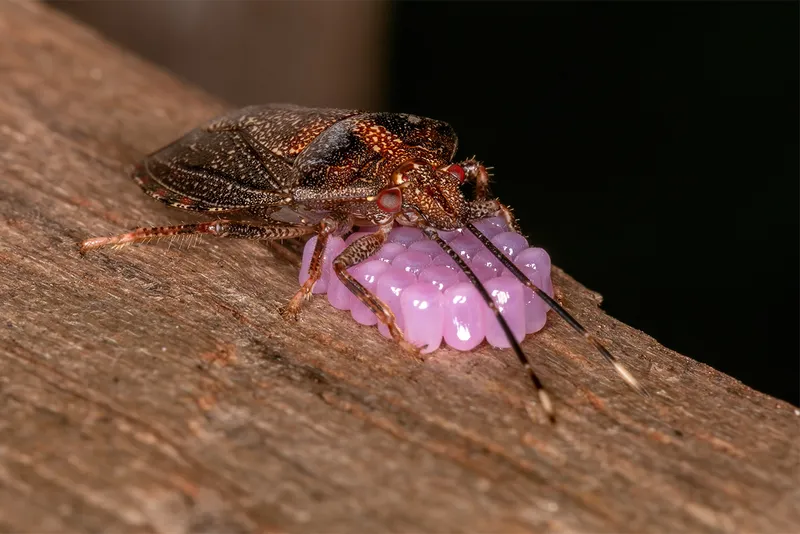
Shield bugs, or 'stink bugs' as they are often known, are a type of insect with sharp teeth and sucking mouthparts. Their names specifically refer to the shield shape of their bodies and their ability to release a strong-smelling defensive spray when threatened.
Female shield bugs, such as those from the genus Antiteuchus, lay eggs that have huge variations in colour, which is thought to aid camouflage. Thus, there are countless examples of brightly-coloured and interesting eggs produced by this species.
3. Whelks
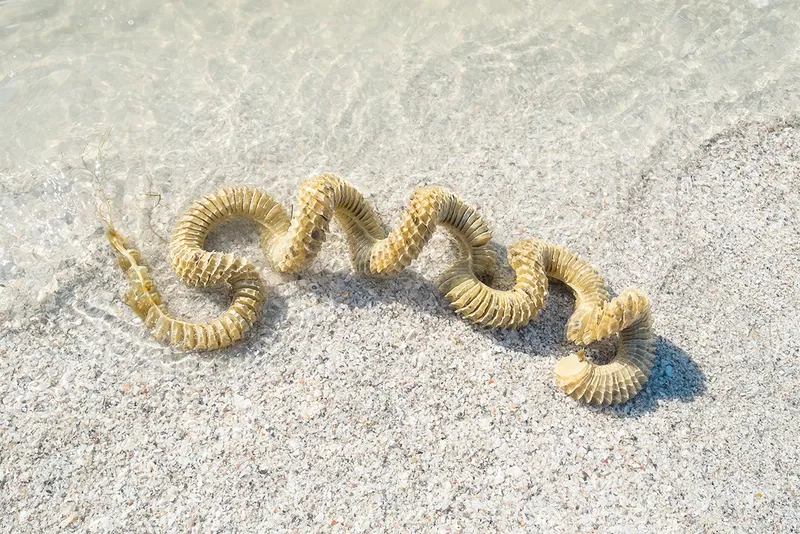
The common whelk is a type of large carnivorous sea snail that can be found around the coast of the UK. They use their distinctive shell to prise open the shells of their prey, feeding on small molluscs, mussels and worms. But this isn't the only skill in their repertoire.
Each whelk can lay up to 2,000 eggs in a spongy ball or spiral. Once the offspring hatch, these impressive empty structures can float to the water's surface and frequently get washed up on beaches, including here in the UK.
Some cases can reach lengths of 60cm or more, so next time you are on the beach keep your eyes peeled for them.
4. Common murres
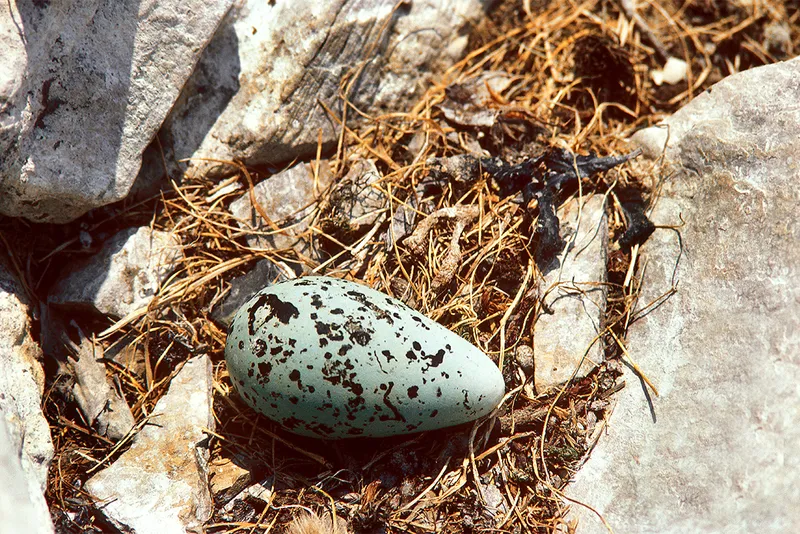
Common murres, also known as foolish guillemots, which are a type of seabird, spend most of their time off land. But when they come ashore to breed, they tend to do so in high densities, on perilous cliff faces and sharp rocky outcrops.
Because common murres do not make nests and only lay single eggs at one time, their eggs have seemingly evolved in a unique way: these distinctive eggs are pointed and elongated to increase surface area.
This in turn makes them more stable on uneven surfaces, decreasing the risk of them rolling away and breaking.
5. Dinosaurs
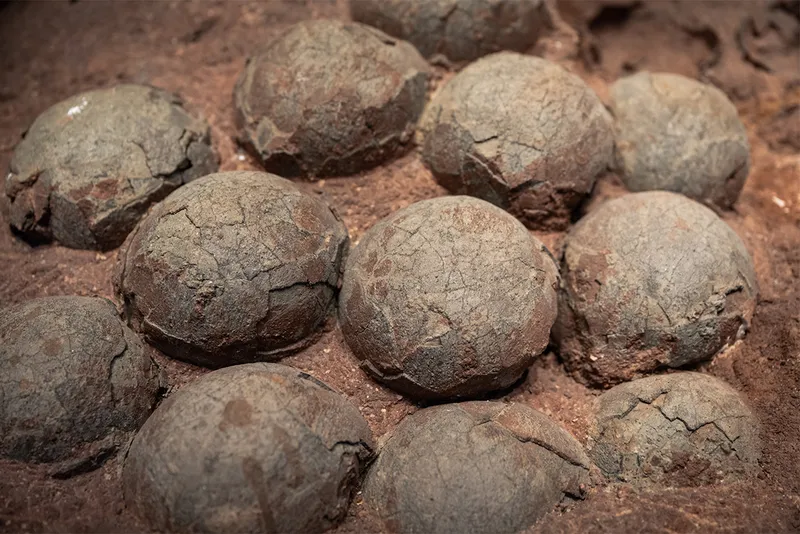
Eggs laid by dinosaurs are the largest eggs ever found, much bigger than any species that is around today. Even so, considering their overall adult size, dinosaur eggs were comparatively small.
Because millions of years have passed since dinosaurs died out, it is almost impossible to tell what species of dinosaur an egg belonged to. But the general rule is that Sauropod – herbivorous and usually long-necked dinosaurs – eggs were round, whereas theropods like Tyrannosaurus rex hatched from eggs that resemble modern-day bird eggs.
Dinosaur eggs are surprisingly rare, and the chances of finding them are much lower than finding a dinosaur skeleton. Scientists estimate that only 10 per cent of dinosaur eggs that were laid hatched successfully, with most being lost to predators.
Read more:
6. Praying mantis

The praying mantis is an amazing ally when it comes to pest control, feeding on flies, crickets and mosquitoes. When they reach adulthood and start to reproduce, females will lay eggs on twigs and branches in a foam-like structure, which can be tricky to spot.
One sac can contain as many as 400 eggs, which is mighty impressive when you consider that one of these sacs is only 3cm in length. Once laid, the foam shell hardens to protect the eggs inside. These will then hatch after a gestation period of around 4 to 6 weeks.
undefined
7. Mermaid purse
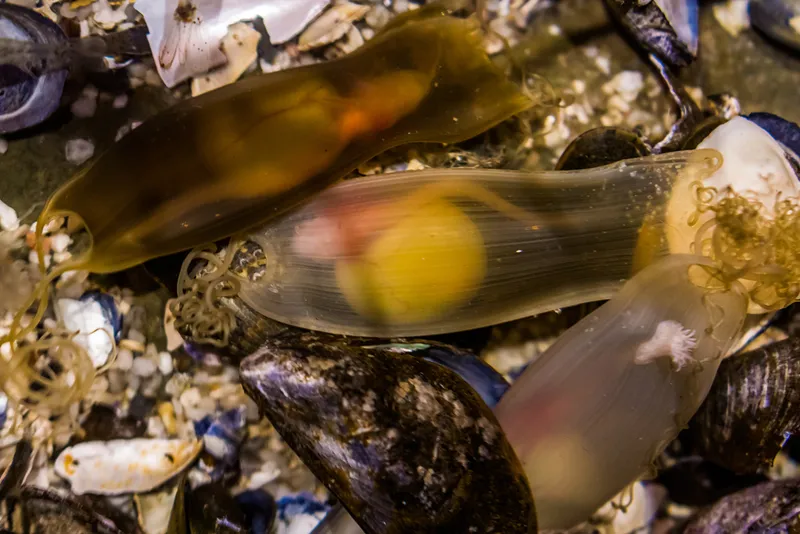
Perhaps the best-known weird egg in nature is the shark's egg case, commonly referred to as a 'mermaid's purse'.
These are tough little rectangular pouches made of collagen with projections from each corner, known as 'horns'. The tough nature and shape are thought to protect the embryo from danger, as once the egg leaves the body of the parent it is at the mercy of predators.
Sharks are not the only species that gestate in such a structure. Skate and other types of chimaera fish (such as ghost sharks) also use a similar method of reproduction, although some of the biggest skate species can have up to 7 embryos inside one case.
8. Green lacewings

Although they are an aggressive predator, the green lacewing is a delicate insect in appearance and the eggs they lay are no different. Before they reproduce, they emit a very low-frequency vibration to attract other mates which can be detected by their legs.
Once mating has taken place, the female lacewings lay their eggs on the underside of leaves mounted on slender thin strands that are only about 1cm in length. They can appear as a single egg, or in a small group which will be located near a food source ready for when the larvae hatch, which is usually after only 4 days.
9. Ostriches
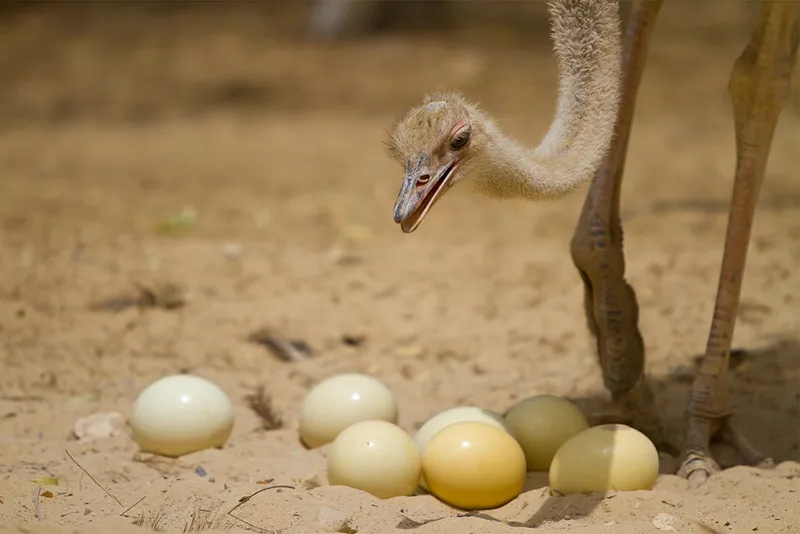
It'll come as no surprise that the largest bird in the world also has the largest eggs, with each weighing on average around 1.4 kg – roughly equivalent in size and volume to 20 to 25 chicken eggs.
They're not just bigger; they're harder too. Ostrich eggshells can require tools to break, making it quite a challenge for a young ostrich to hatch.
A female ostrich generally lays 12 to 18 eggs in one communal nest. The eggs are incubated by the females by day and by the males by night and can take up to 45 days to hatch.
Despite their strength, ostrich eggs are still at risk of predation. Fewer than 10 per cent of eggs survive incubation, and only 15 per cent of those chicks make it to adulthood.
Read more:
10. Jawfish
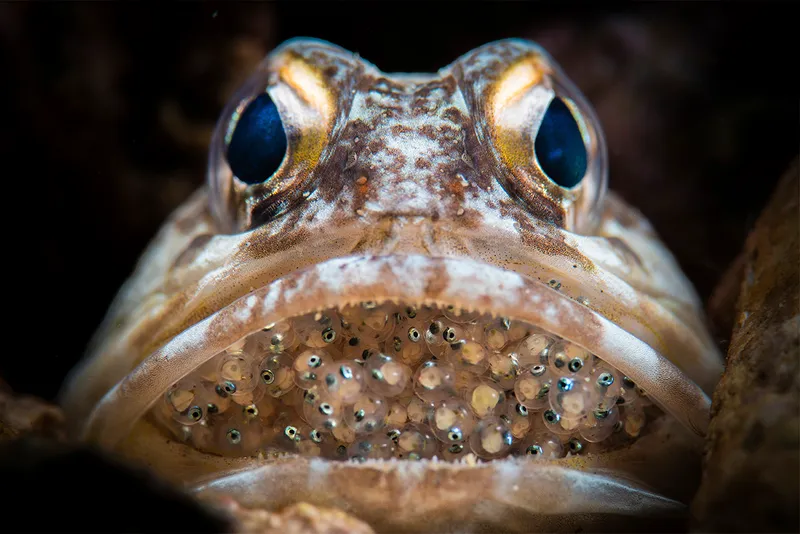
Male jawfish incubate offspring in their mouths to protect them from prey, keeping hundreds of eggs in their mouths for up to 80 days at a time. This is a process known as 'mouthbrooding', and has been observed in over 50 species of fish.
However, unlike many other mouthbrooders, the jawfish will occasionally spit out the eggs into a nest so he can eat and clean the eggs. Well, we all need a break sometimes.
Read more: